Gujarati Wedding
Gujarat is known for its great culture, and delicious food. All of those traits close during a typical Gujarati wedding where the union of two souls isn't just a bunch of ancient ritual, but a real celebration. It is a two or three day’s affair with multiple rituals observed through every day . The beautiful music of Dhol, Nagada, Turi, Taturi and Murli are the primary that you simply would hear once you attend a Gujarati wedding. Gujarat is the land of colours, riches, culture and food. Gujarati people are warm and hospitable, and this hospitality is evident in their wedding functions also. These are the important pre- and post-wedding rituals of a Gujarati wedding as follows:
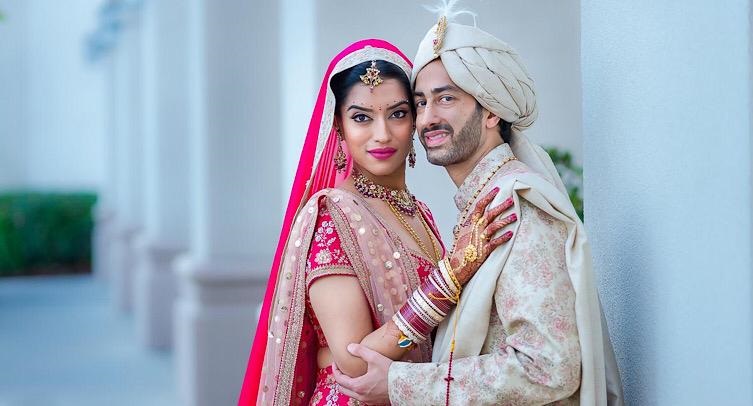
Pre-wedding rituals
Chandlo Matli
This is the foremost Gujarati marriage function, which is all about the acceptance of the wedding . The bride’s father along side four other male members from the bride’s side visit the to-be groom’s home and shower him with blessings and shagun and therefore the marriage date is also fixed on the same day.
Gol Dhana
The engagement ceremony during a Gujarati wedding is understood as gol dhana, which suggests coriander seeds and jaggery. The bride-to-be and her family pay a visit to the groom-to-be’s house with sweets and a few gifts. The rings are exchanged in the presence of their respective families, and the couple seeks the blessings from five married women from each side of the family.
Mandap Mahurat
It's time to start with preparations for the main wedding day. And this happens with the 'Mandap Mahurat'. A priest is invited to perform a Puja at both the homes, seeking blessings from Lord Ganesha. He prays that God protects the couple and their families from harm and obstacles.
Mehendi
The Mehendi ceremony is generally observed two days prior to the wedding day. Henna is applied on the bride’s hands and feet in detailed patterns. Other women in the family also get their hands and feet painted with henna.
Sangeet Sandhya
This ceremony is observed during the evening a day prior to the wedding. Both the bride’s and the groom’s family come together at a common venue and perform songs and dance, especially traditional Garba dances.
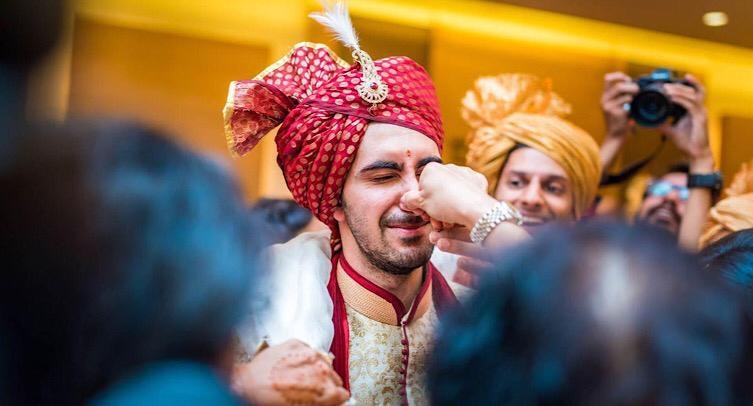
Pithi
Warm hues of sunny yellow fill the room with the aroma of sandalwood and rosewater from the Haldi paste fills the air. The bride and groom sit on a Bajat in their respective homes and every one the relatives alternate to use this Haldi paste on their hands and feet.
Mameru
A day before the wedding, the groom’s maternal uncles, Mama and Mosa, visit the bride’s house carrying presents for her, ahead of her wedding day. Traditionally, these gifts include her bridal outfit - a Paanetar saree, bridal jewellery sets and bridal Chura, along side sweets and dry fruits.
Wedding Day Rituals
Varghodo
The wedding procession where the groom travels to the bride’s house. The groom arrives at the bride’s place on a horse and his relatives walk with him while dancing with music and band and crackers.
Ponkvu
This custom refers to welcoming of the groom by the bride’s family. The groom arrives and he met the bride’s mother who perform aarti, applies tika on his forehead and pulls him inside by trying to grab the groom’s nose which he playfully tries to escape.
Jaimala
During this ritual, the bride and groom exchange garlands twice, first time of which the groom has to stand on a stool so that he is standing on higher ground, and for the second round he steps down and they are on equal ground.
Madhuparka
The bride’s mother leads the groom to the Mandap where she washes his feet with milk and water. She then offers him Panchamurt, a drink made from the goodness of ghee, honey, sugar, milk and yoghurt.
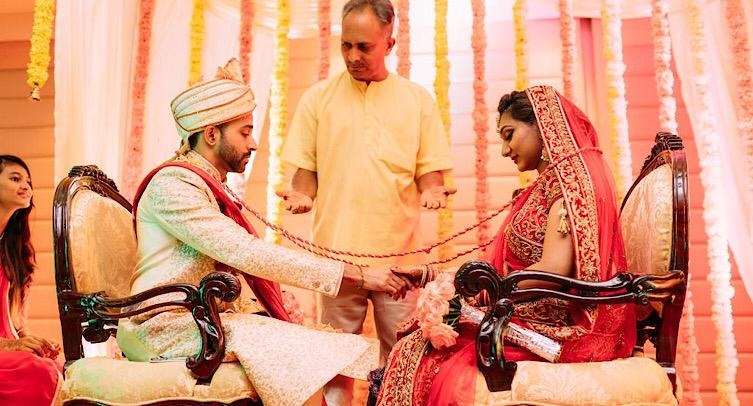
Antarpaat
Antarpaat is a curtain, one such ceremony where there is a curtain between the bride and groom. In this Gujarati wedding ritual, the bride is escorted to the mandap by her maternal uncle. During the course of this ritual, the curtain is lowered.
Kanyadaan
Kanyadaan is the moment when the bride’s father gives his daughter’s hand in the hands of the groom. The father of the bride washes the groom’s feet with milk and water, after which he gives his daughter’s hand to him and blesses the couple with a lifetime of happiness together.
Hasta Milap
The priest then unites the two by knotting the groom’s shawl with one end of the bride’s saree while chanting songs from sacred scriptures.
Joota churai
This is the foremost exciting and really entertaining ritual of most Indian weddings. In Gujarati weddings, the sisters of the bride try to hide the groom’s footwear and agree to return them only in exchange for money.
Mangal Pheras
The bride and therefore the groom revolve around the sacred fire fourfold , each with its own special meaning and commitment – Dharma, Artham, Kama, Moksha. The priest chants sacred verses and asks the couple to repeat after him.
Sindoor
The bride and the groom recite their sacred vows while touching a straight line of seven betel nuts with their toes. After that, the groom applies Sindoor on her bride’s hair parting and ties a Mangalsutra around her neck. The wedding ceremony involves an end with the newlywed touching their elder's feet seeking their blessings.
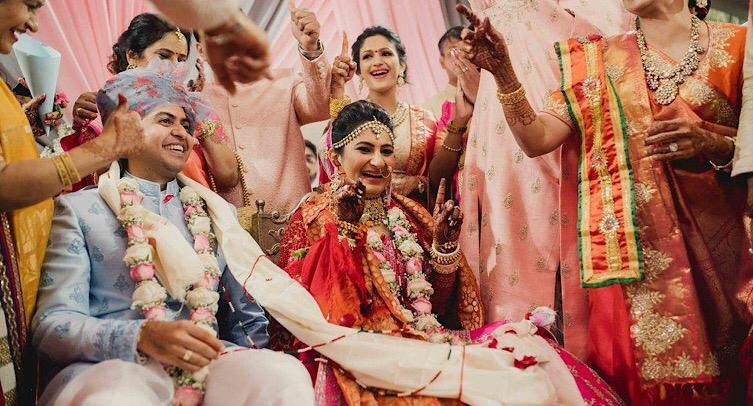
Vidaai
This ceremony sees the departures of the bride from her own home after the wedding is concluded. And after that it may end with a small reception.
Post-wedding rituals
Ghar Nu Laxmi
The bride is welcomed into the groom’s home as the Goddess Laxmi who shall bring good fortune in the house. The mother-in-law places a vessel crammed with rice at the doorway then the bride is asked to spill the vessel by touching it together with her right foot. This ritual symbolizes wealth and the bride’s acceptance of her responsibilities towards her new home.
Aeki Beki
It’s a game, a tray of water is mixed with milk and sindoor and several coins are placed along with a ring. Then the couple is asked to seek out a hoop , it's said whoever finds a hoop four out of seven times shall rule the household.
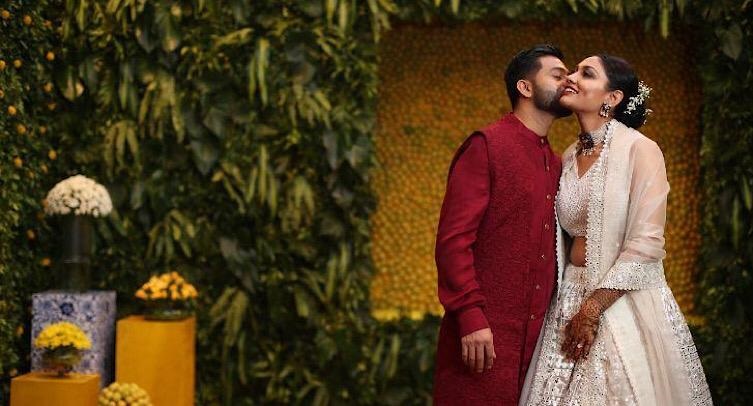
Saubhagyavati Bhava
Seven women’s who are married are invited to bless the couple. While blessing the bride, these seven women says three words that are ,Akhanda Sauvagyavati Bhava, meaning may your married glory remain forever.
Chero pakaryo
This is another one among the funny rituals of a Gujarati wedding. Here the groom catches hold of his mother-in-law’s saree and asks for more gifts. Her saree is then crammed with gifts and cash by those present, and later given to the groom and his family.
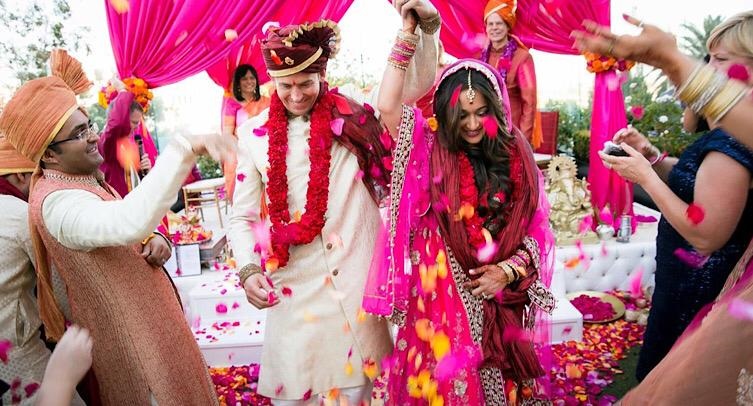
#ShaadiBag #indianwedding #gujratiwedding #indianrituals #gujratirituals #indiatradition #gujratitradition #traditionalwedding #shaadibagevent #weddingday #beautifuldulhan #handsomedulha #gujjuwedding #gujratibride #gujratigroom #gujjufood #gujjufun #gujratiweddingfun
Author
Khushi Masarani
Published on : 23-Sep-2020 | By Admin
Recent Reviews
0.00 / 5
Gujarat is known for its great culture, and delicious food. All of those traits close during a typical Gujarati wedding where the union of two souls isn't just a bunch of ancient ritual, but a real celebration. It is a two or three day’s affair with multiple rituals observed through every day . The beautiful music of Dhol, Nagada, Turi, Taturi and Murli are the primary that you simply would hear once you attend a Gujarati wedding. Gujarat is the land of colours, riches, culture and food. Gujarati people are warm and hospitable, and this hospitality is evident in their wedding functions also. These are the important pre- and post-wedding rituals of a Gujarati wedding as follows:

Pre-wedding rituals
Chandlo Matli
This is the foremost Gujarati marriage function, which is all about the acceptance of the wedding . The bride’s father along side four other male members from the bride’s side visit the to-be groom’s home and shower him with blessings and shagun and therefore the marriage date is also fixed on the same day.
Gol Dhana
The engagement ceremony during a Gujarati wedding is understood as gol dhana, which suggests coriander seeds and jaggery. The bride-to-be and her family pay a visit to the groom-to-be’s house with sweets and a few gifts. The rings are exchanged in the presence of their respective families, and the couple seeks the blessings from five married women from each side of the family.
Mandap Mahurat
It's time to start with preparations for the main wedding day. And this happens with the 'Mandap Mahurat'. A priest is invited to perform a Puja at both the homes, seeking blessings from Lord Ganesha. He prays that God protects the couple and their families from harm and obstacles.
Mehendi
The Mehendi ceremony is generally observed two days prior to the wedding day. Henna is applied on the bride’s hands and feet in detailed patterns. Other women in the family also get their hands and feet painted with henna.
Sangeet Sandhya
This ceremony is observed during the evening a day prior to the wedding. Both the bride’s and the groom’s family come together at a common venue and perform songs and dance, especially traditional Garba dances.

Pithi
Warm hues of sunny yellow fill the room with the aroma of sandalwood and rosewater from the Haldi paste fills the air. The bride and groom sit on a Bajat in their respective homes and every one the relatives alternate to use this Haldi paste on their hands and feet.
Mameru
A day before the wedding, the groom’s maternal uncles, Mama and Mosa, visit the bride’s house carrying presents for her, ahead of her wedding day. Traditionally, these gifts include her bridal outfit - a Paanetar saree, bridal jewellery sets and bridal Chura, along side sweets and dry fruits.
Wedding Day Rituals
Varghodo
The wedding procession where the groom travels to the bride’s house. The groom arrives at the bride’s place on a horse and his relatives walk with him while dancing with music and band and crackers.
Ponkvu
This custom refers to welcoming of the groom by the bride’s family. The groom arrives and he met the bride’s mother who perform aarti, applies tika on his forehead and pulls him inside by trying to grab the groom’s nose which he playfully tries to escape.
Jaimala
During this ritual, the bride and groom exchange garlands twice, first time of which the groom has to stand on a stool so that he is standing on higher ground, and for the second round he steps down and they are on equal ground.
Madhuparka
The bride’s mother leads the groom to the Mandap where she washes his feet with milk and water. She then offers him Panchamurt, a drink made from the goodness of ghee, honey, sugar, milk and yoghurt.

Antarpaat
Antarpaat is a curtain, one such ceremony where there is a curtain between the bride and groom. In this Gujarati wedding ritual, the bride is escorted to the mandap by her maternal uncle. During the course of this ritual, the curtain is lowered.
Kanyadaan
Kanyadaan is the moment when the bride’s father gives his daughter’s hand in the hands of the groom. The father of the bride washes the groom’s feet with milk and water, after which he gives his daughter’s hand to him and blesses the couple with a lifetime of happiness together.
Hasta Milap
The priest then unites the two by knotting the groom’s shawl with one end of the bride’s saree while chanting songs from sacred scriptures.
Joota churai
This is the foremost exciting and really entertaining ritual of most Indian weddings. In Gujarati weddings, the sisters of the bride try to hide the groom’s footwear and agree to return them only in exchange for money.
Mangal Pheras
The bride and therefore the groom revolve around the sacred fire fourfold , each with its own special meaning and commitment – Dharma, Artham, Kama, Moksha. The priest chants sacred verses and asks the couple to repeat after him.
Sindoor
The bride and the groom recite their sacred vows while touching a straight line of seven betel nuts with their toes. After that, the groom applies Sindoor on her bride’s hair parting and ties a Mangalsutra around her neck. The wedding ceremony involves an end with the newlywed touching their elder's feet seeking their blessings.

Vidaai
This ceremony sees the departures of the bride from her own home after the wedding is concluded. And after that it may end with a small reception.
Post-wedding rituals
Ghar Nu Laxmi
The bride is welcomed into the groom’s home as the Goddess Laxmi who shall bring good fortune in the house. The mother-in-law places a vessel crammed with rice at the doorway then the bride is asked to spill the vessel by touching it together with her right foot. This ritual symbolizes wealth and the bride’s acceptance of her responsibilities towards her new home.
Aeki Beki
It’s a game, a tray of water is mixed with milk and sindoor and several coins are placed along with a ring. Then the couple is asked to seek out a hoop , it's said whoever finds a hoop four out of seven times shall rule the household.

Saubhagyavati Bhava
Seven women’s who are married are invited to bless the couple. While blessing the bride, these seven women says three words that are ,Akhanda Sauvagyavati Bhava, meaning may your married glory remain forever.
Chero pakaryo
This is another one among the funny rituals of a Gujarati wedding. Here the groom catches hold of his mother-in-law’s saree and asks for more gifts. Her saree is then crammed with gifts and cash by those present, and later given to the groom and his family.

#ShaadiBag #indianwedding #gujratiwedding #indianrituals #gujratirituals #indiatradition #gujratitradition #traditionalwedding #shaadibagevent #weddingday #beautifuldulhan #handsomedulha #gujjuwedding #gujratibride #gujratigroom #gujjufood #gujjufun #gujratiweddingfun
Author
Khushi Masarani